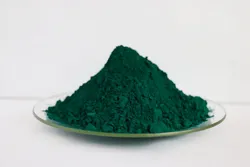Best Practices for Using Pigments in Plastic Manufacturing
2024-10-14
Using pigments in plastic manufacturing requires careful consideration to achieve the desired color, performance, and safety standards. In this blog post, we will discuss best practices for selecting and incorporating pigments into plastic formulations, ensuring optimal results.
1. Selecting the Right Pigment
- Assessing Color Requirements: Begin by defining the specific color shade needed for your application. Utilize color matching tools and resources to select pigments that meet these specifications.
- Evaluating Performance Attributes: Consider the performance requirements of the final product, such as UV stability, heat resistance, and chemical compatibility. This will guide you in selecting pigments that enhance these attributes.
2. Testing and Formulation
- Conducting Sample Tests: Before full-scale production, create small batches to test pigment dispersion and color consistency. This helps identify any potential issues early in the process.
- Adjusting Concentrations: Determine the optimal pigment concentration for achieving the desired color without compromising the mechanical properties of the plastic.
3. Incorporating Pigments into the Processing Cycle
- Masterbatch vs. Direct Addition: Decide whether to use a masterbatch (concentrated pigment mixed with a carrier resin) or add pigments directly to the plastic formulation. Masterbatches can improve dispersion and processing efficiency.
- Temperature Control: Monitor processing temperatures during extrusion or injection molding to prevent pigment degradation and maintain color integrity.
4. Quality Control and Compliance
- Implementing Quality Checks: Regularly conduct quality control checks to ensure color consistency, dispersion quality, and adherence to performance specifications throughout production.
- Meeting Regulatory Standards: Ensure that the pigments used comply with relevant industry standards and regulations, particularly for products intended for food contact or children’s toys.
5. Sustainability Considerations
- Exploring Eco-Friendly Options: As sustainability becomes a priority, consider using bio-based or recyclable pigments. This can enhance your product’s marketability while reducing environmental impact.
- Reducing Waste: Implement processes to minimize waste during pigment handling and application, promoting a more sustainable production environment.
Conclusion
Incorporating pigments into plastic manufacturing requires careful selection, testing, and quality control to ensure the final product meets aesthetic and performance expectations. By following these best practices, manufacturers can enhance their products' color and functionality while adhering to regulatory standards and sustainability goals. As the industry evolves, staying informed about new pigments and technologies will continue to drive innovation in plastic applications.



